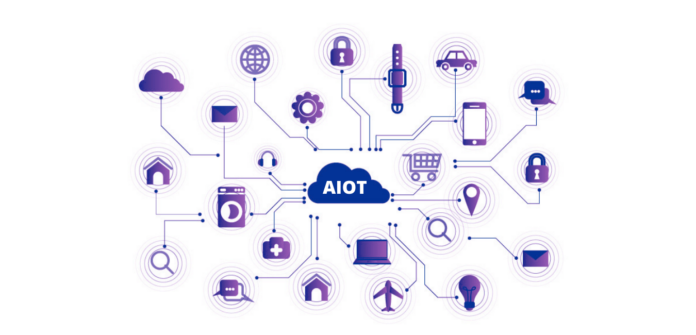From a business perspective, the Internet of Things (IoT) and Artificial Intelligence (AI) are two increasingly dominant technology trends. Together, these two technologies – AI and IoT – promise to go beyond mere buzzwords and redefine the future of Industrial Automation.
The combination of artificial intelligence and the Internet of Things – so-called Artificial Intelligence of Things (“AIoT”) – is gaining momentum as companies move towards digitization. AIoT is helping to discover trends, patterns and relationships between connected machines. AIoT symbolizes a more modern way of sharing AI, taking it out of the data center and integrating it directly into the tools we use every day.
This way of optimizing AI is revolutionizing industries such as healthcare, manufacturing and transportation.
AIoT is helping manufacturers improve IoT functionality, enhance human-device communication and empower IT. AI can create enormous value by turning IoT data into meaningful insights for better decision making.
The combination of AI and IoT is truly revolutionary, but at the same time it benefits both technologies. On the one hand, AI adds value to IoT through machine learning capabilities, while IoT adds value to AI through connectivity, signaling and data transfer. If applied well, AI analytics can transform IoT data into useful and exploitable information.
As AIoT is highly viable and productive in industrial environments, it is important to consider the evolution of connected systems. Connecting IoT devices has helped businesses gain greater control and visibility of key IT assets.
How to benefit from AIoT
The current pandemic and the hybrid workplace movement have highlighted the importance of smart homes, which present an incredible (and immediate) opportunity for AIoT adoption.
How can one prepare? First, you have to start with the processor, and when you build AI into a device, you face a long-standing technical challenge: how to increase the computing power of the device without increasing its cost. The most feasible approach is to look for a chip technology of the future that is high-performance, affordable and flexible enough to be used in almost any AI application.
Second, we have all seen the “technologization” of everyday objects, such as toothbrushes, which have become more about fashion than utility. Instead, consider how the intelligence department can enhance or replace existing functions to make them more useful.
Benefits of AIoT in Industry 4.0
- Help streamline business processes to increase operational efficiency.
- AI-based algorithms eliminate redundant data and help organize unstructured data to obtain useful and meaningful information.
- It provides insight into consumer behavior and the challenges they face, helping to deliver a more personalized experience.
- Rapid access to data allows companies to identify cost savings without compromising productivity.
Most importantly, AIoT has the ability to analyze the vast amount of telemetry data from connected devices in real time. Unlike traditional IoT systems, which are reactive and designed to respond to urgent events by sending alerts to stakeholders, AIoT architectures are proactive, capable of predicting equipment failures and shutting down faulty machines before the event occurs. Manufacturers need to upgrade their network infrastructure to take full advantage of intelligent and connected systems.
There are many use cases for AIoT in different industries and it totally depends on your business objectives. They can help you improve your overall productivity. While there will be challenges along the way, the benefits of implementing a combination of IoT and AI will outweigh them.
Follow and connect with us on Facebook, LinkedIn & Twitter

